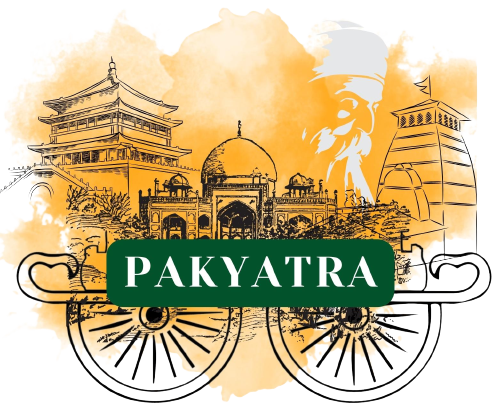PAK YATRA is a tour operator company providing tour services and facilitates Sikh community from different parts of the world.
Detailed History of Grand Jamia Mosque Lahore
Importance of Grand Jamia Mosque:
Grand Jamia Mosque, located in Bahria Town, Lahore, Pakistan, is not just a place of worship but also a significant architectural and cultural landmark. It is the third-largest mosque in Pakistan and the fourteenth largest in the world, with a capacity of accommodating 70,000 worshippers. The mosque symbolizes the fusion of traditional Islamic architecture with modern elements, making it a source of pride for the local community and a point of attraction for tourists.
Story Behind Grand Jamia Mosque:
Designed by renowned architect Nayyar Ali Dada, Grand Jamia Mosque was inaugurated on Eid al-Adha on 6 October 2014. Its construction was a testament to years of meticulous planning and dedication to create a masterpiece that blends Islamic artistry with contemporary design. The mosque’s architecture draws inspiration from iconic mosques like the Badshahi Mosque, Wazir Khan Mosque, and Sheikh Zayed Mosque.
Location and District:
Grand Jamia Mosque is situated in Bahria Town, Lahore, Pakistan, located on Bahria Town’s Main Boulevard, next to Juniper and Chambelli Block. The mosque is located at the following geographic coordinates: 31.315539°N, 74.568591°E.
Preservation Efforts:
Preserving the architectural and cultural heritage of Grand Jamia Mosque is of utmost importance. The mosque’s management ensures regular maintenance and conservation efforts to uphold its grandeur and significance. Despite being a relatively new structure, efforts are made to maintain its pristine condition and ensure its longevity for future generations to appreciate.
Architectural Marvel:
Grand Jamia Mosque is an architectural marvel that showcases the finest craftsmanship and artistic intricacies. The mosque’s design features a grand dome surrounded by 20 smaller domes, four minarets towering at 165 feet each, and a landscaped courtyard in the typical “Charbagh” style. The exterior is adorned with four million handmade Multani tiles, while the interior boasts custom-made carpets from Turkey and over 50 Persian chandeliers.
Historical Evolution:
The construction of Grand Jamia Mosque represents a modern interpretation of traditional Islamic architecture. The mosque’s design reflects a blend of historical influences from iconic mosques across the world, while incorporating modern construction techniques and materials. Its evolution from concept to completion signifies the advancement of architectural innovation in contemporary Islamic structures.
Background:
Grand Jamia Mosque was conceived as part of the development of Bahria Town, Lahore, with the vision of creating a landmark that would showcase the essence of Islamic architecture and culture. The mosque’s design and construction process involved meticulous planning and collaboration between architects, engineers, and craftsmen to bring the vision to fruition.
Historical Significance:
Grand Jamia Mosque holds immense historical significance as a symbol of religious devotion, cultural heritage, and architectural excellence. Its grandeur and scale make it a point of pride for the local community and a destination for visitors seeking to admire Islamic artistry. The mosque’s completion and inauguration mark a milestone in the architectural landscape of Pakistan, highlighting the country’s commitment to preserving its rich cultural heritage while embracing modernity.




